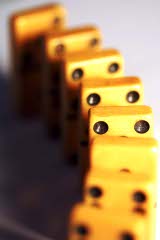Karma (kamma) is one of Buddhism’s most misunderstood concepts and teachings. First off, karma is neither good nor bad; it is not the just result of action, and it isn’t one’s fate. Such misconceptions are obstacles to understanding the Dharma (Dhamma) or Buddha’s teaching concerning the continuing of the individual creation process through intention, volition (choice), and action.
Science’s law of cause and effect is a close parallel to the Buddhist “law” of karma, but it isn’t exactly the same. The biblical, “whatsoever a man shall soweth so shall he also reap,” isn’t either, although it’s in the same ballpark. Perhaps the closest is Webster’s definition, “the sum and the consequences of a person’s actions during the successive phases of his existence, regarded as determining his destiny.”
To fully understand karma, it is necessary to first understand Buddhism’s response to the age-old question, “Who am I.” Five skandhas or aggregates constitute a “human” or a “being,” according to the teaching. The first one is our body or form, with its four elements of solidity, fluidity, heat, and motion, including sense organs (eyes, ears, nose, etc.). The second is our sensations or feelings (about things). The third – is our perceptions, and the fourth – is our mental formations or the mulling over in our mind, the choosing and intent of the action we take. The fifth is our consciousness or awareness.
These five “parts” of a being are constantly changing; none are permanent. Compare a current photo of yourself with your baby picture, and you can easily see how your body has changed. Your feelings and perceptions have changed, too, just as have your choices and the resulting actions. These ever-changing aggregates cause one to evolve. Actually, there is no permanent “self,” only this unbroken chain of aggregates, this evolutionary continuity of existence.
When the body “dies,” it is the first aggregate of organic matter that is dead. The other four cannot experience death because they are not material. They are the unseen and intangible essences, sometimes called energy or spirit. Some religions might refer to them as the soul, but in Buddhism, the idea of a permanent, unchanging soul or spirit is rejected.
What causes us to change? It is our intention, volition, and action. Just as the seed we plant and nourish grows into its intended and resulting flower or fruit, so we grow into the result of the seeds “inside” us that receive our nourishment. We have many kinds of both positive and negative seeds in our “store consciousness.” Some are inherited from our ancestors. Choosing which seeds to nourish creates who we are to become. Because we control our decisions and actions, we also determine our destiny. By deciding what we do, we are deciding who we are to be.
This process of choosing and doing is called karma. Karma is not something that someone has because there is no one. According to Buddhist teachings, what is mistaken for a “someone” is this ever-changing process. In short, karma is who and what each of us is. It is the answer to the question, “Who am I?” The answer: “I am karma.”

